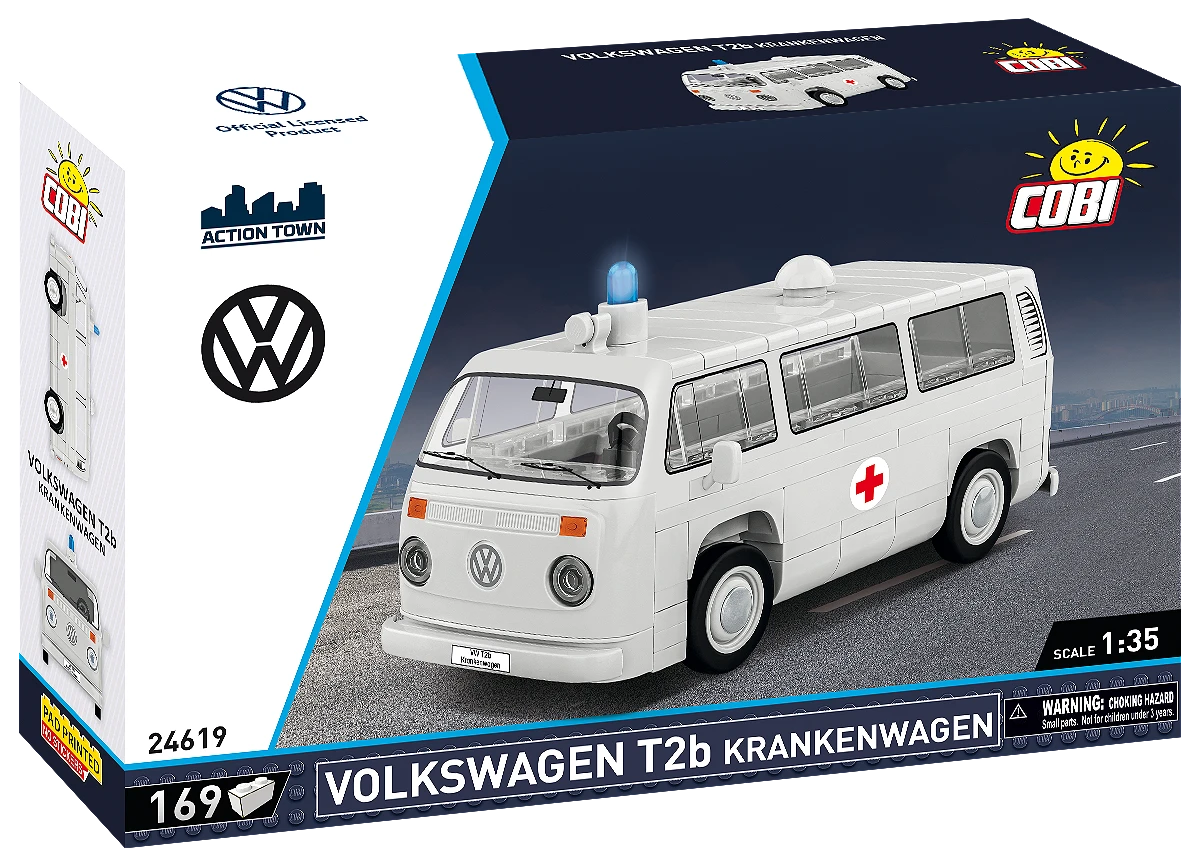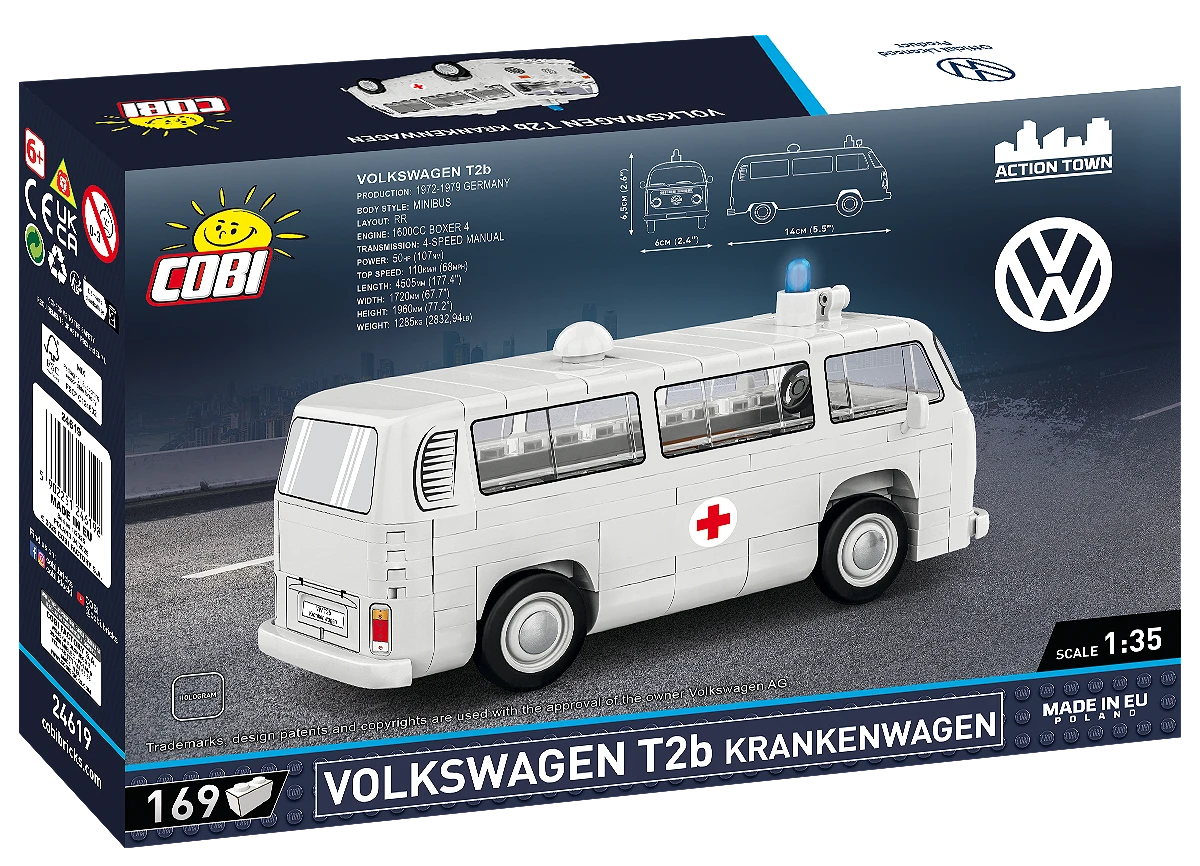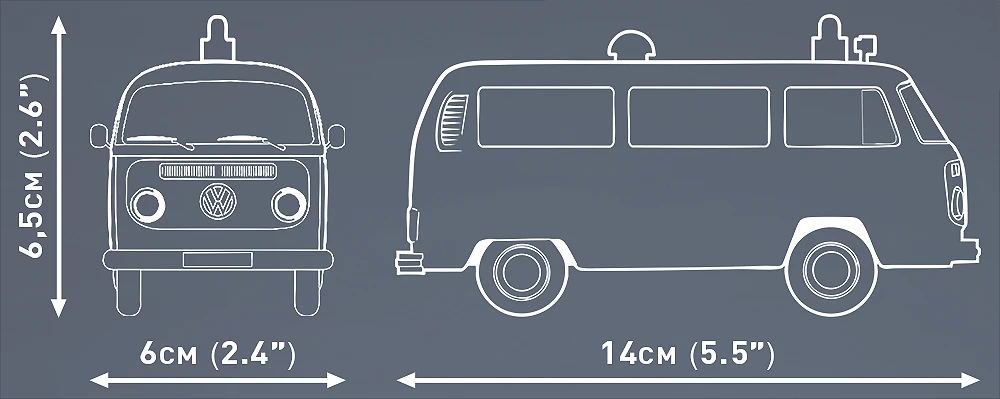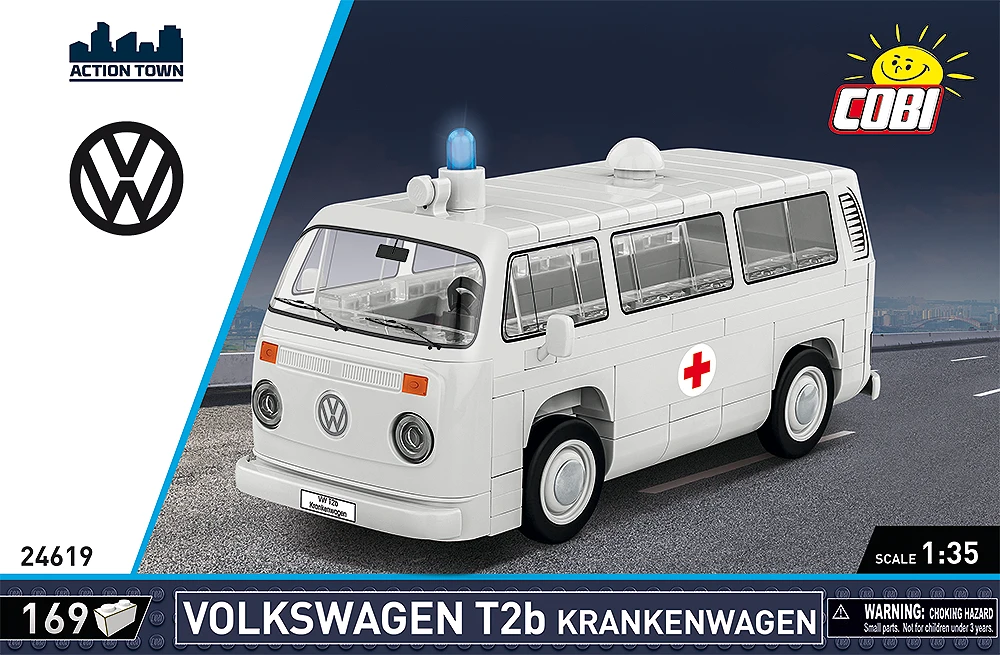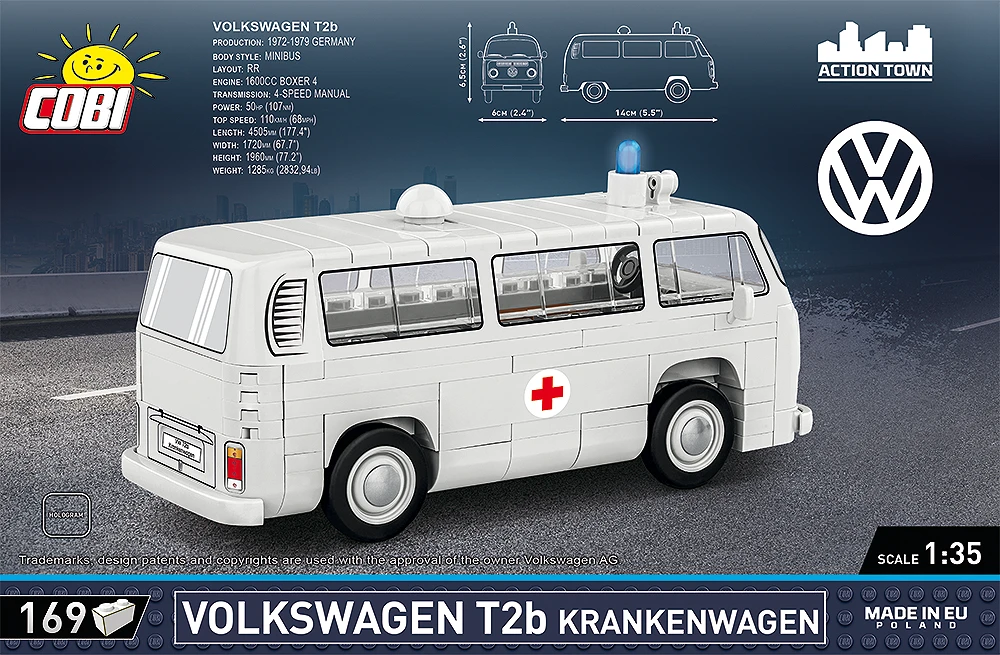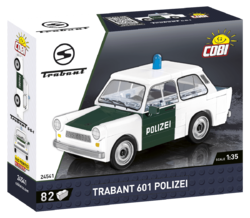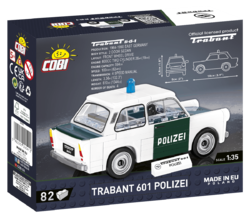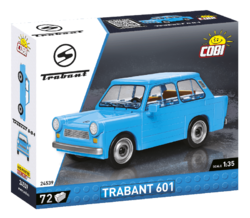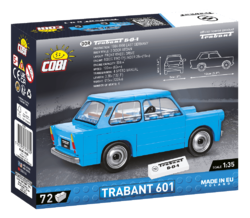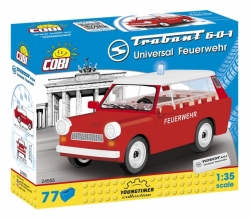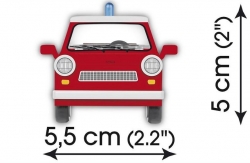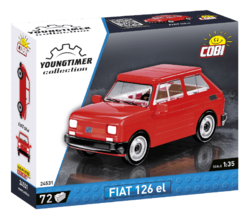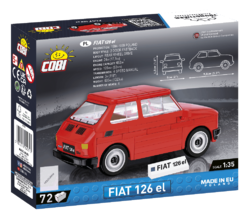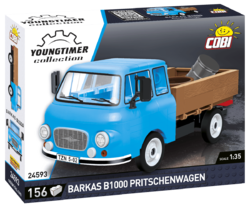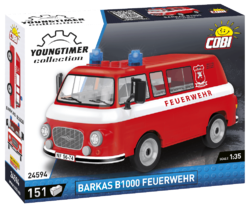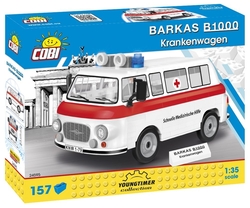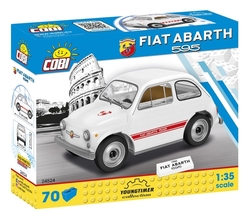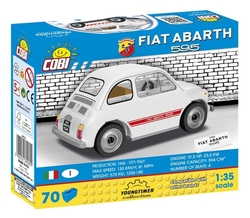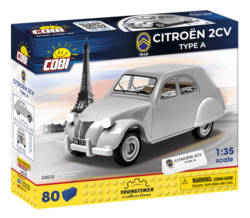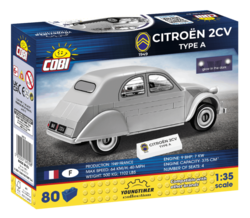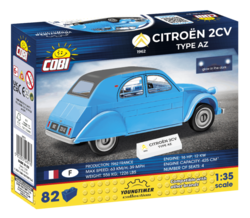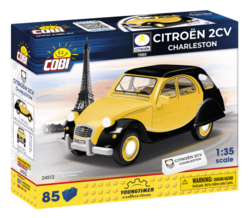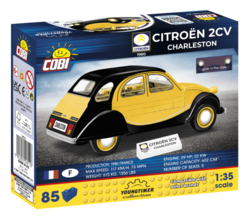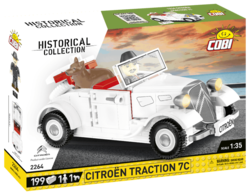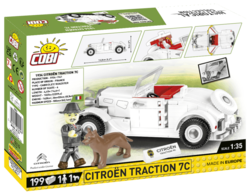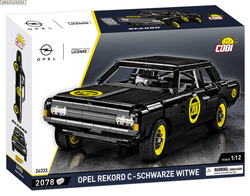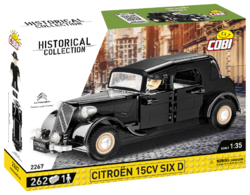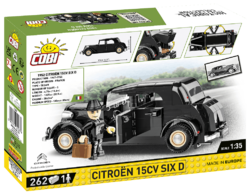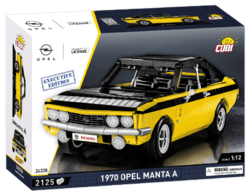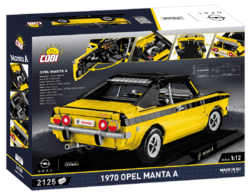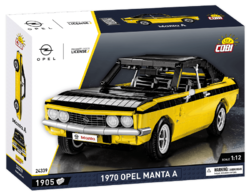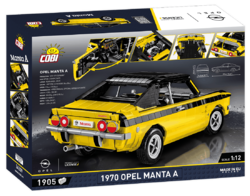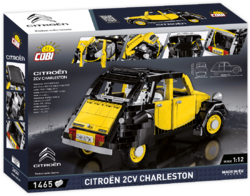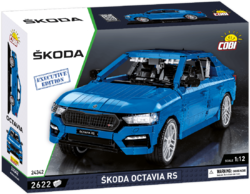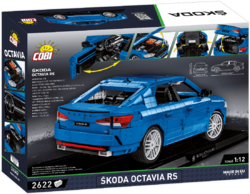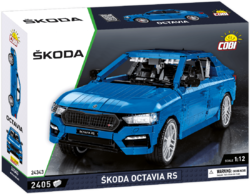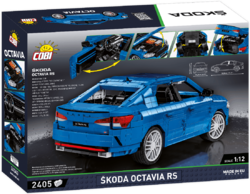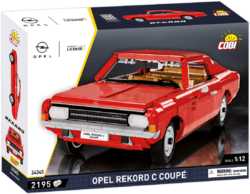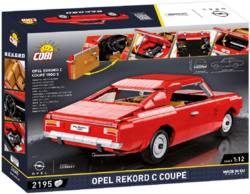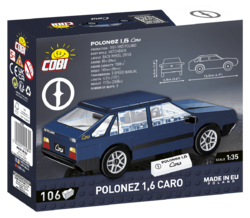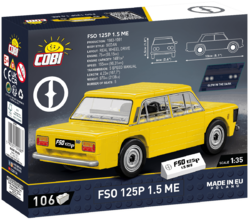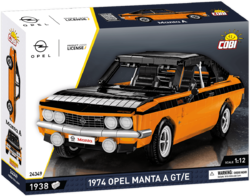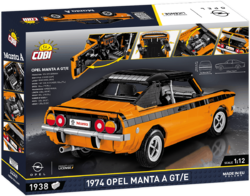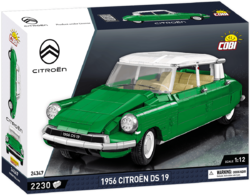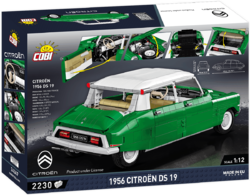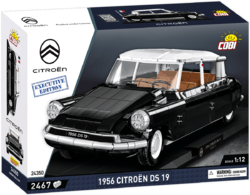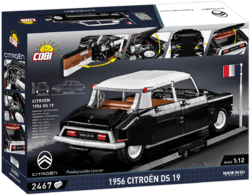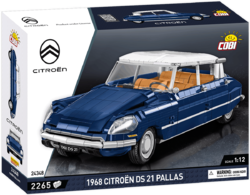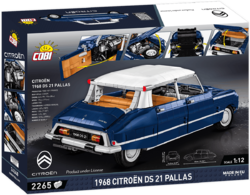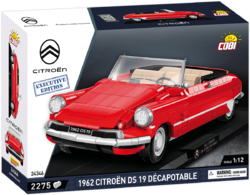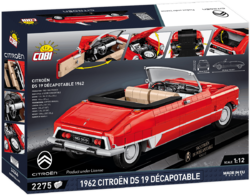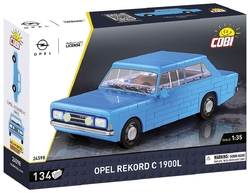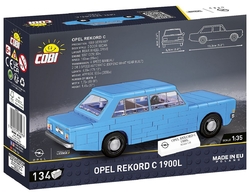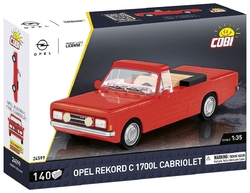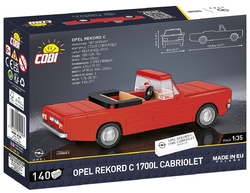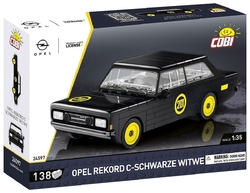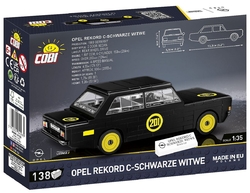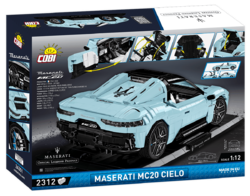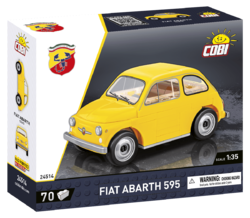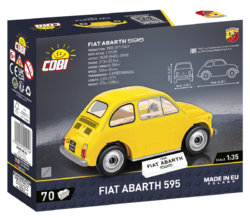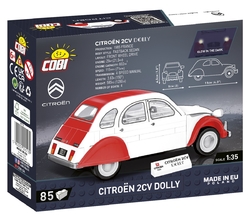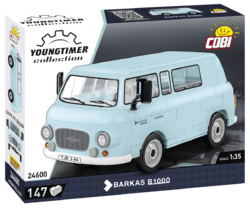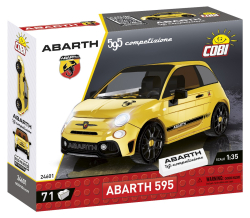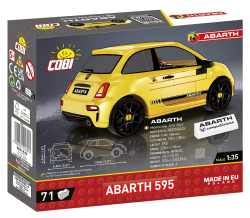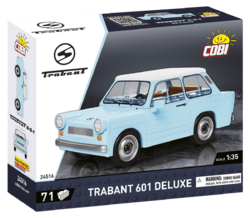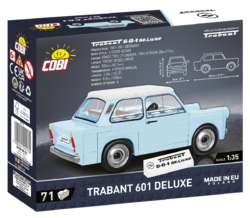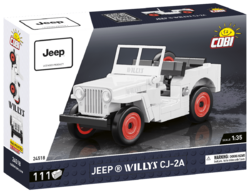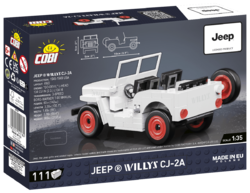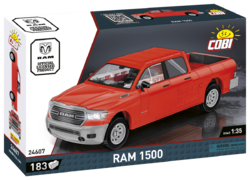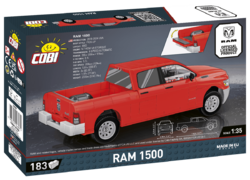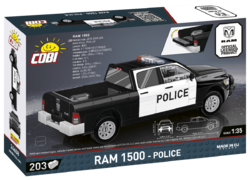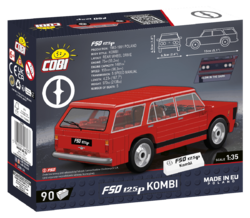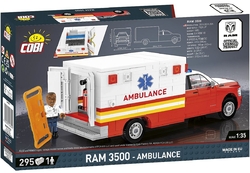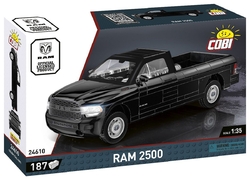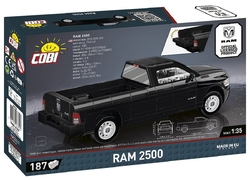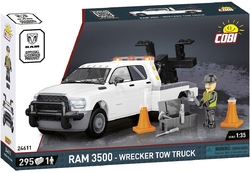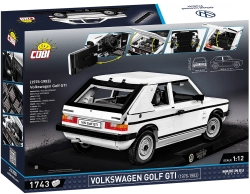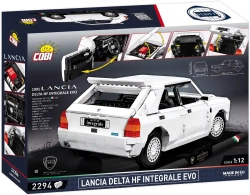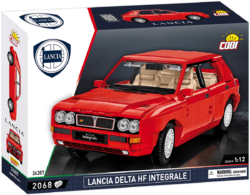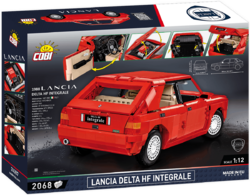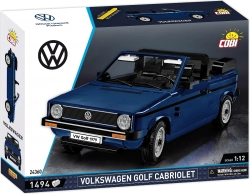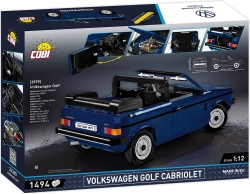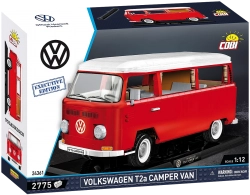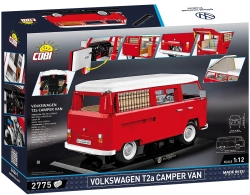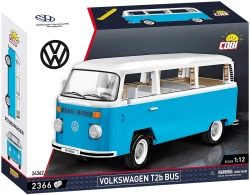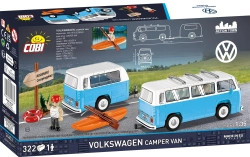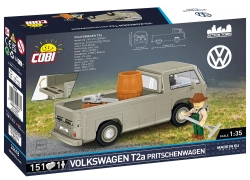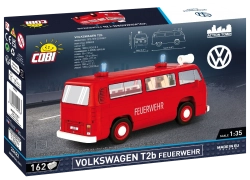A model kit of the German car manufacturer Volkswagen Transporter 2b Ambulance from 1972 in 1:35 scale. The car is made in light gray with a blue beacon and siren on the roof. There are red crosses on the sides of the car. The glazing is made of transparent plastic and the car is easy to drive while playing. The historic cars from the Action Town and Youngtimer collections are so charming that you will want to collect them all. The kit is made under the official license of Volkswagen AG.
Show more
0 %
(0 Ranking)
562 Kč
pcs
Add to Cart
In stock - ready to ship
| List Number: | COBI-24619 |
| EAN: | 5902251246198 |
| Warranty: | 24 months |
| Manufacturer: | COBI |
| Loyalty Points: | 10 |
| Price excluding VAT: | 464,10 Kč |
Description
Parametres
Files and Links
Discussion
Reviews

Did you know: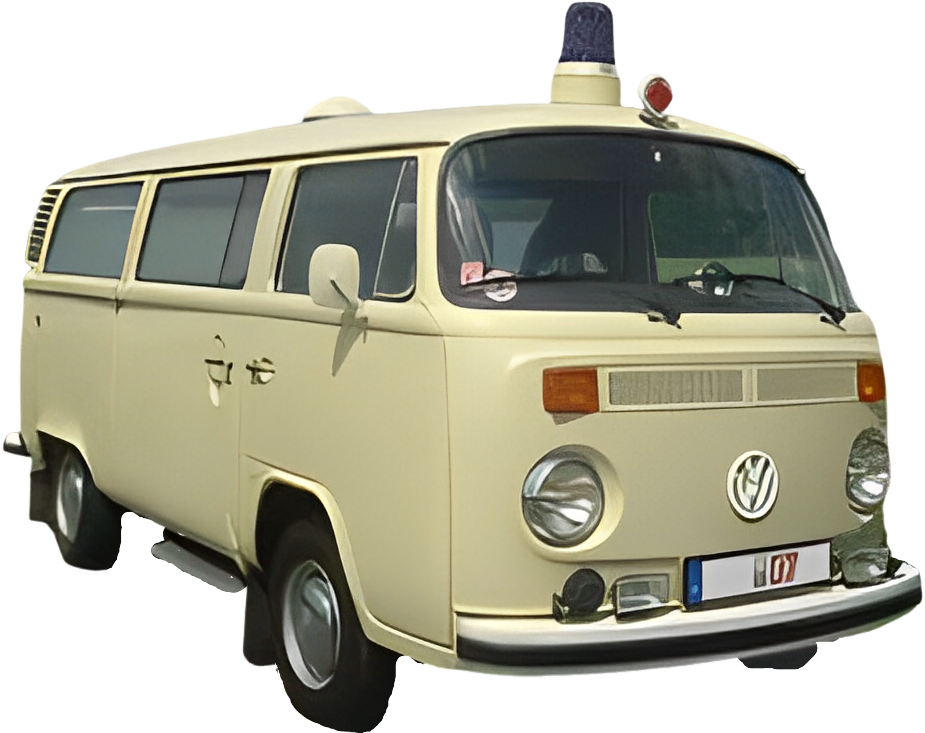
- While frightened, rusty sheets called Barkas raced along East German roads, Volkswagen was already preparing the second generation of the legendary Transporter. Its origin, however, must be sought in the Netherlands.
- The foundation of the legendary Transporter was laid by Dutch Volkswagen dealer Ben Pon, who noticed supply carts on the assembly lines with the cargo bed in front and the cab behind the load. Post-war Europe lacked vehicles of all kinds, so the enterprising B. Pon began offering these supply carts to his customers. Interest was enormous, but the Dutch authorities refused to approve a vehicle in which the driver sat behind the load. This, however, did not deter Ben. He cut up a period flyer, glued a picture of the cab in front of the loading area onto white paper, and headed to Volkswagen.
- VW management evaluated and approved the concept. Thus was born a legend that is still being produced today in its seventh generation.
- Series production of the T2 began in the summer of 1967. Volkswagen could not keep up with demand. During the first months after its market launch, the manufacturer recorded tens of thousands of orders. Production capacity had to be increased to 270 units per day. By comparison, the East German Barkas managed in 30 years to produce as many units as VW did in 1.5 years.
- The vehicle’s design was simple and reliable. Alongside the standard van, a flatbed, Kombi, minibus, Caravelle, ambulance, and the Samba version with a retractable canvas roof were gradually added.
- The ambulance was equipped with two spaces for transporting supine patients and a removable chair.
- Under one of the stretchers is a cabinet with equipment for medical personnel, and on the ceiling upholstery there is a hook for securing an IV drip.
- The last vehicles of the T2 generation rolled off the production line in mid-1979, when they were replaced by the 3rd generation T3. But that is another story.
- In total, 1,280,000 T1 units were produced in various versions.
Technical specification:
- length 4505 mm, width 1720 mm, height 1980 mm
- curb weight 1285 kg
- engine petrol Boxer 4, 1600 cm³ displacement, 35 kW output
- gearbox 4 forward + 1 reverse
- fuel tank capacity 45 l
- top speed 110 km/h
- consumption 10 l/100 km
- seating capacity 2
- maximum patients transported 3
From the Lastauto Omnibus magazine test, 1979:
“Everything in the vehicle is designed for the comfort and safety of patients. Upon boarding, the patient and accompanying doctor appreciate the folding step, which compensates for the Transporter’s high ground clearance. The ride itself is smooth and, with an experienced driver, more or less stable. During the editorial test, I also tried the role of the paramedic. It is astonishing how doctors manage, in addition to maintaining balance, to care for the patient. I, on the other hand, could only roll around the cabin from side to side in the corners, to the great amusement of my editorial colleagues.”
| Number of figurines | 0 pcs |
|---|---|
| Version (series) | 03/2025 |
| Dimensions after assembly | 14 x 6 x 6,5 cm |
| Number of pieces | 169 pcs |
| Scale | 1:35 |
| Package weight | 240 g |
| Box dimensions | 27,5 x 18 x 5,5 cm |
| Recommended age | 7+ |
| Collection | Action Town |
| Contains luminous blocks | No |
| Material | Plastic |
| Compatible with other brand of kits | Yes |
Discussion is empty.
There is no review for product yet









